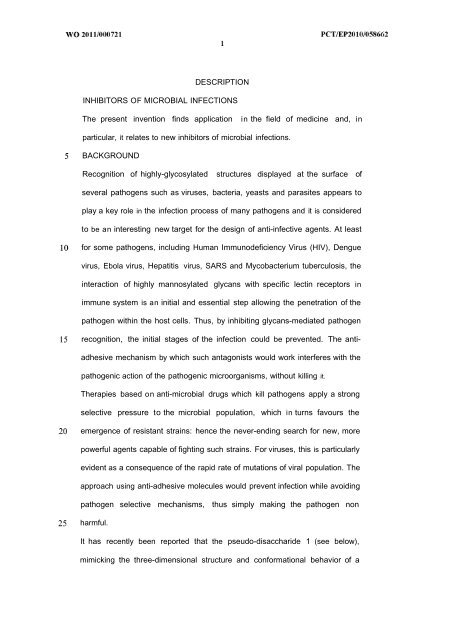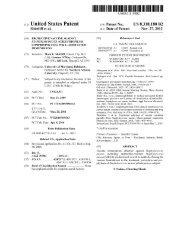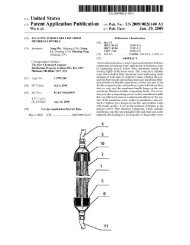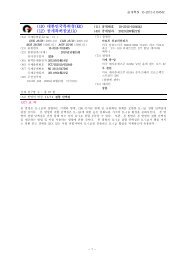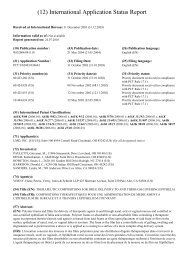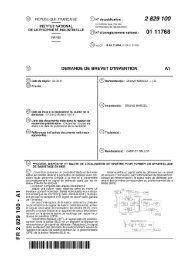W0 2011/000721 A1 I||||||||||||||||||||||||||||||||||||||||||||||||||||||||| - Questel
W0 2011/000721 A1 I||||||||||||||||||||||||||||||||||||||||||||||||||||||||| - Questel
W0 2011/000721 A1 I||||||||||||||||||||||||||||||||||||||||||||||||||||||||| - Questel
Create successful ePaper yourself
Turn your PDF publications into a flip-book with our unique Google optimized e-Paper software.
DESCRIPTION<br />
INHIBITORS OF MICROBIAL INFECTIONS<br />
The present invention finds application in the field of medicine and, in<br />
particular, it relates to new inhibitors of microbial infections.<br />
BACKGROUND<br />
Recognition of highly-glycosylated structures displayed at the surface of<br />
several pathogens such as viruses, bacteria, yeasts and parasites appears to<br />
play a key role in the infection process of many pathogens and it is considered<br />
to be an interesting new target for the design of anti-infective agents. At least<br />
for some pathogens, including Human Immunodeficiency Virus (HIV), Dengue<br />
virus, Ebola virus, Hepatitis virus, SARS and Mycobacterium tuberculosis, the<br />
interaction of highly mannosylated glycans with specific lectin receptors in<br />
immune system is an initial and essential step allowing the penetration of the<br />
pathogen within the host cells. Thus, by inhibiting glycans-mediated pathogen<br />
recognition, the initial stages of the infection could be prevented. The anti-<br />
adhesive mechanism by which such antagonists would work interferes with the<br />
pathogenic action of the pathogenic microorganisms, without killing it.<br />
Therapies based on anti-microbial drugs which kill pathogens apply a strong<br />
selective pressure to the microbial population, which in turns favours the<br />
emergence of resistant strains: hence the never-ending search for new, more<br />
powerful agents capable of fighting such strains. For viruses, this is particularly<br />
evident as a consequence of the rapid rate of mutations of viral population. The<br />
approach using anti-adhesive molecules would prevent infection while avoiding<br />
pathogen selective mechanisms, thus simply making the pathogen non<br />
harmful.<br />
It has recently been reported that the pseudo-disaccharide 1 (see below),<br />
mimicking the three-dimensional structure and conformational behavior of a


